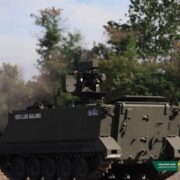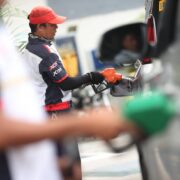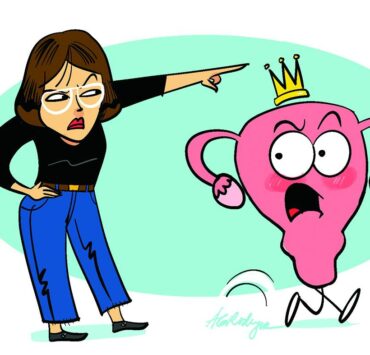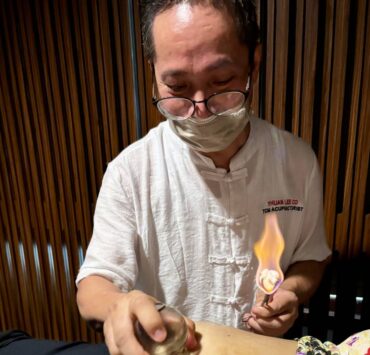Ambulance stories—and how to get help fast during emergencies
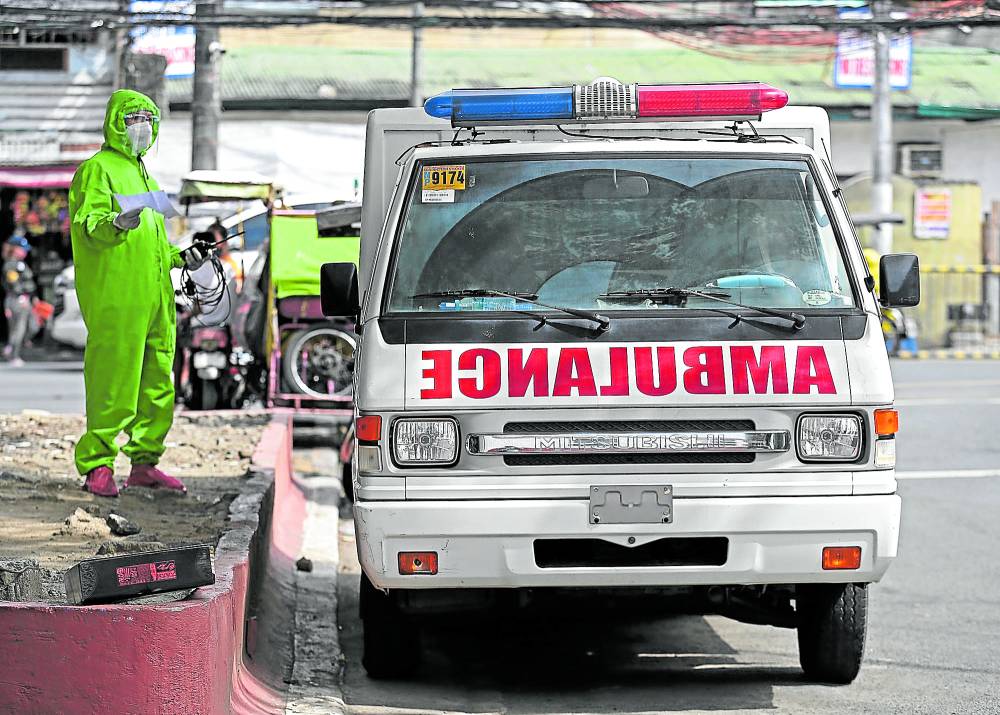
It’s a morning I will never forget.
My mother pounded on my door, screaming, jolting me from sleep. My grandma wouldn’t wake up. She was breathing but unconscious. We needed an ambulance, quick.
My mother had been trying to call the nearest hospital but no one was picking up. Instead, she wanted us to drive to the hospital that was five minutes away and get an ambulance to come back with us to my grandma’s house. I guess she thought it would be faster than trying to round up people who can carry my grandma from her second-floor bedroom to the car. It wasn’t even 6 a.m. yet.
A neighbor who was a doctor was checking on my grandma as we drove away. As soon as the car reached the emergency room driveway, before it even stopped moving, I had jumped out. Time was of the essence.
I went up to the guard and said quickly, in Filipino, “Sir, we need an ambulance. My grandmother wouldn’t wake up.”
He went inside the ER to call someone. After a bit, a man in ER scrubs walked toward me. I said it again, “Sir, we need an ambulance now, my grandma wouldn’t wake up.”
I expected quick action. I expected urgency. That’s how medical professionals respond in an emergency … at least in the movies and TV.
But this was real life. And instead of acting fast, the man brought out his mobile phone and opened the calculator app. His thumbs danced over the keypad as he added number after number. 18,850 + 3,400 + 1,600 + 800 + 2,400 + 800.
I watched in disbelief. Was this really happening? This is how they handle an emergency at what is supposed to be one of the country’s best hospitals? My grandmother was dying and instead of sending someone to help her, this person’s priority was computing how much he wanted to charge me for that help.
I signed whatever he wanted me to sign and said, impatiently, that yes, we will pay whatever amount it was (P27,850 by the way—for a five-minute ambulance ride).
Did he finally jump to action? No. He walked back inside the ER while I stood there in the driveway waiting. And waiting. And waiting.
I waited so long that the guard approached me and asked, “Wala pa, ma’am?”
After what felt like an eternity, people finally exited the ER to board the ambulance. They did not run, they did not rush, they did not act like they were headed to an emergency.
Finally, at my grandma’s house, they got moving. I would accompany Lola Lyd—first in the ambulance and then in the ER. They kept trying to get a response out of her while I talked to an endless stream of doctors and signed consent form after consent form. It was a massive stroke, doctors would later say, and we had missed the golden hour—crucial time that could have saved her.
My grandma would die in that hospital’s neurocritical care unit after being in a coma for days.
It’s been three years but I still can’t forget the slow response of the emergency team at that hospital. I was so bothered by it that I never deleted the video I took of the man computing the ambulance charges from my phone no matter how often it ran out of storage. It’s still there.
I wondered—was our experience a one-off? I asked people on Instagram: Have you ever had to call an ambulance? How did it go?
Oh, the stories they told.
The ambulance that never came
Miguel told me about the morning they woke up to find his brother not breathing. He quickly called a hospital and this is how the conversation went:
Miguel: “Hello? Kailangan po namin ng ambulance.”
Hospital: “Emergency po ba?”
Miguel: “Yes.”
Hospital: Kayo po ba ’yung patient?”
Miguel: “Hindi po.”
Hospital: “Sino po ’yung patient?”
Miguel: “Kapatid ko.”
They then proceeded to ask him for his brother’s full name, birthday, and other questions.
The person on the phone then asked for their complete address. And then he heard these words on the line: “’Yung hospital po namin wala pong ambulance eh.”
Miguel replied, “Huh? Eh bakit andami-dami mo pang tinanong sa akin?”
He then called another hospital—that same hospital I went to that awful morning. “It was the same conversation but at least they had an ambulance.”
But after around 20 minutes, the ambulance was still nowhere to be found and so Miguel took matters into his own hands.
He and a cousin rounded up around 10 other people to help them carry his brother, who weighed over 450 pounds, so they could bring them to the hospital themselves in a car borrowed from their neighbor.
Miguel said, “When we arrived at the hospital, I saw an ambulance outside the ER … I heard one of the staff beside the ambulance say, ‘Oh my, siya ’yung susunduin natin!’”
In the end, they never used the ambulance. “But upon checking the hospital bill, nandoon ’yung P9,000 or P10,000 na bill for the ambulance which I had them remove.”
May’s mother had to be rushed to the ER after a regular checkup. “Walang ma-detect na BP sa kanya. It was one of the well-known hospitals in our city but I was informed na they didn’t have an ICU bed available. They said they’d just convert one but we still needed to look for a private nurse since my mom needed close monitoring.”
They decided to just transfer her mom to a better hospital. But the first hospital didn’t have an available ambulance. They were referred to a private ambulance service. “It cost P25,000 which became P20,000 after PWD discount.”
May rode in the ambulance with her mom while her brother and father took their car and went home to get some clothes for their hospital stay. “What’s funny and frustrating is nauna pa din yung brother ko sa hospital by almost 20 minutes! Riding the ambulance you would expect na mauuna kami since emergency na nga and she had a heart attack na.”
They took a long route to the second hospital and that’s why her brother, despite making a pit stop home, still made it there before they did.
May can laugh about it now because, thankfully, her mom survived the ordeal.
Another story: A diplomat needed an ambulance but was told she needed to pay P20,000 in cash before she could be picked up.
Cut-off
Haze said, “Back in 2021, peak-Covid chaos, we tried to get an ambulance for my mother-in-law. Called one service or the Covid hotline, and they go, ‘Ma’am hanggang 8 p.m. lang po kami.’ We were stunned. Like—sorry, is this an ambulance or a milk tea shop? Didn’t know emergencies had a cut-off time.”
Dinna’s mom had a stroke. The hospital, which was two blocks away, told her the ambulance would get there in eight minutes. Seven minutes in, she called them again and was told they were 25 minutes away. “It took them 30 minutes to travel two blocks. And they charged P8,000.”
When Ava needed an ambulance for her grandpa, she called a nearby hospital. “They said they don’t do pickups so I had to call a different hospital.”
Another time, it was her uncle who needed an ambulance. “It took forever.”
They called a hospital but the ambulance came too late—when they arrived, her uncle had already died. “He wasn’t allowed to ride in it. Only alive people can be transferred,” she said. “You also have to pay P16,000 whether the patient traveled in it or not. I found that price so steep because we didn’t even use it. Not a good experience overall.”
Cate, who once had to call for help for her husband who injured himself while at the gym, said, “Ang hirap humanap ng number para sa ambulance.”
Because that’s the thing—until we need to call an ambulance, it’s something we don’t think about. But maybe we should all be better prepared. In case of an emergency, what is the fastest way to get help? What numbers should be stored in our phones so we could make sure aid is just a quick call away?
911
It was only recently that I found out that the Philippines actually has its own 911 hotline—they call it Next Generation Advanced (NGA) 911. Dial 911 and you’ll hear the following options: “Press 1 for police, press 2 for fire department, press 3 for emergency medical services.”
That’s one number to keep in mind. I just don’t know how well the system works and how quickly they send help. Another thing you can do is save the emergency number of a hospital you trust. For The Medical City (TMC), it’s 8988-1000 local 6174.
“The TMC number is always manned 24/7. There’s never an issue getting through. We have a very strict benchmark that from receiving the call to dispatching the ambulance, the ambulance leaves within 10 minutes. We’ve never had a deviation from that as far as I’m aware,” said Dr. Stuart A. Bennett, president and group CEO of The Medical City.
Their target is to get to the patient in 10 minutes too. “That’s within Metro Manila. That can extend, depending on the location, when there’s traffic, when it’s raining, when the ambulance gets blocked on the road, when the information is unclear or wrong, like when street names sound similar. But we’re very consistent.”
If there’s a deviation, they would investigate. They have a quality department called the Continuous Improvement Hub which evaluates all their systems and processes. They’re guided by a bible of sorts—their emergency manual. “Every single detail is looked at. It’s updated on a regular basis. I think we’re on version 4 or 5 now. It covers everything from the second we receive a request to the patient arriving in the facility and the handover of the patient to the ER doctors,” said Dr. Bennett.
I asked him if it’s part of protocol to compute costs and present the fees to the person asking for help before an ambulance is dispatched. Yes, he said. “We have to get the consent right before we can send the ambulance. We give them the cost estimate. We don’t dispatch the service until we have an agreement and that really avoids people having unexpected surprises when it comes to paying for the service later on.”
But this is done very quickly, he said. “The priority is to send the ambulance. But it’s part of the standardized process in the same way when you’re admitted to hospital, when we’re telling you an advisory on how much the admission charges.”
TCM works with their ambulance partner Lifeline. (Lifeline also has hotlines—16-911 and 8839-2525.)
Barangay ambulances
Another place people turn to for help in times of emergencies? Their barangay.
Nikki said, “We used the barangay ambulance to bring my dad to the hospital. He had difficulty breathing because of pneumonia, it turned out. All Quezon City barangays have and ambulance. It’s convenient to use because we can call them anytime. Free pa.”
The barangay ambulance also came to her uncle’s aid when he fell down a flight of stairs.
From the time Mel’s father got sick to the time he died, they relied on their barangay ambulance whenever they needed to take him to the hospital in Makati. “We had to call the ambulance maybe four times. They responded quickly. We decided to go with them for two reasons: the service is free and the location where the ambulance would be coming from is very near our house, much much closer than if we tried to call for a hospital ambulance.”
Pearl had previously spent P13,000 on an ambulance for her mom. “The second time, someone told me to just call the barangay because they offer it for free. Every barangay in our city has an ambulance.”
When Irene needed to take her mom to the hospital, she had no idea who to call. “I called our building receptionist and she said she would check with the barangay if the ambulance was there before calling a private provider. She called me back after five minutes to say the barangay ambulance can bring my mom to the hospital—free of charge! Our taxes at work! They were in the condo in 10 minutes. I was surprised in the best way.”
She was all praises for the ambulance staff who took care of her mom that day. “It was such a stressful time for my mom and me, and they made things a little bit easier to bear.”
When Maggie was hit by a car in Makati 10 years ago, people called an ambulance for her. “They got to me pretty quickly. I think my proximity to the barangay hall may have contributed to the quick response time.”
It was Marikina’s city-emergency response ambulance that came to help Leana when she broke her arm. “Yung Rescue 161. There was a paramedic who gave first aid and then they transported me to the nearest public hospital. Really cool. Part of what I love about Marikina is how reliable their emergency response team is.”
Find out if your barangay has an ambulance service and if your city has an emergency response hotline and then save those numbers too. We all hope emergencies won’t happen but, just in case, it’s good to be ready.
Another thing to remember? Don’t wait until it’s too late to call. Dr. Bennett said, “I think the threshold for calling an ambulance should be quite low. You don’t have to be dying to call an ambulance. The rule of thumb is if you’re not confident to get in a car or to get in a Grab, just call an ambulance.”









